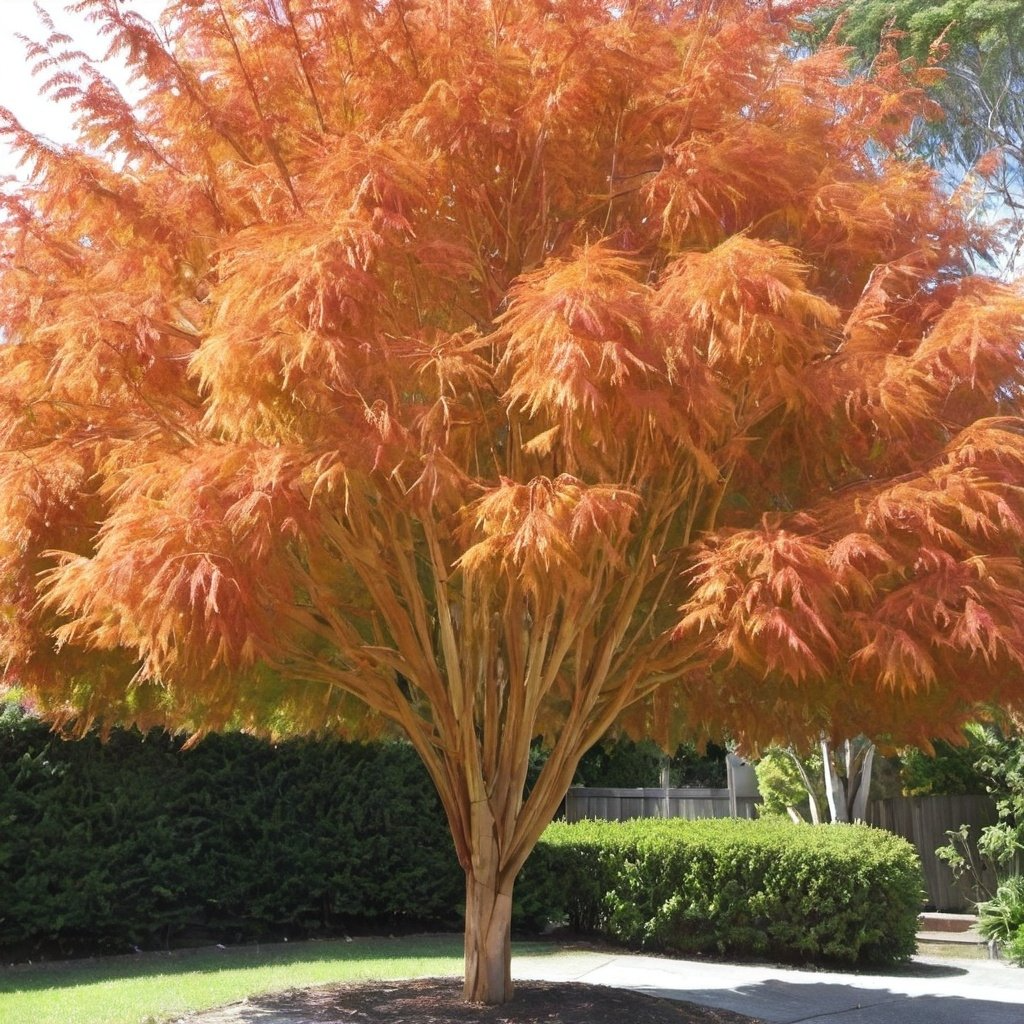Paperbark Maple Tree Seeds
Paperbark Maple Tree Seeds
Couldn't load pickup availability
Paperbark Maple Tree Seeds
(Acer griseum d.w.)
The Paperbark Maple Tree, is a species of flowering plant in the soapberry family, Sapindaceae. It is native to central China and is known for its decorative, exfoliating bark, which peels away in thin, papery sheets to reveal cinnamon-brown or reddish-brown underlayers. Here are some key features of Acer griseum:
- Leaves: The leaves are trifoliate (composed of three leaflets), with a rough texture and a dark green color that turns to bright shades of red and orange in the fall.
- Bark: One of the most distinctive features of the Paperbark Maple is its bark, which peels away in layers, creating a striking, textured appearance.
- Size: This tree typically grows to a height of 20-30 feet (6-9 meters) and a spread of 15-25 feet (4.5-7.5 meters).
- Growth Rate: It has a slow to moderate growth rate.
- Hardiness: Acer griseum is hardy in USDA zones 4-8, making it suitable for a wide range of climates.
- Uses: This tree is often used as an ornamental plant in gardens and parks due to its attractive bark and foliage. It can be used as a specimen tree or in mixed borders.
The Paperbark Maple is appreciated for its year-round interest and is a favorite among gardeners and landscape designers.
Growing a paperbark maple (Acer griseum) from seeds can be a rewarding experience. Here's a step-by-step planting instructions guide to help you through the process:
1. Stratification
Paperbark maple seeds require stratification (a period of cold treatment) to break dormancy and encourage germination.
-
Moist Stratification:
- Place the seeds in a plastic bag with a mixture of moist sand, seed-starting mix or peat moss.
- Hot water treat the seeds then 60-90 days warm stratification followed by 90-120 days cold stratification.
- Check Regularly: Ensure the medium stays moist but not waterlogged. Check periodically for mold or germination.
2. Sowing Seeds
- Timing: After stratification, sow the seeds in late winter or early spring.
- Soil: Use a well-draining seed starting mix.
- Containers: Plant the seeds in seed trays or small pots.
- Depth: Sow the seeds about 1/4 inch deep.
- Spacing: Space seeds at least 2 inches apart to allow room for growth.
3. Germination and Early Care
- Light: Place the trays or pots in a bright location but not in direct sunlight.
- Temperature: Maintain a temperature of about 18-21°C (65-70°F) for germination.
- Moisture: Keep the soil consistently moist but not waterlogged.
4. Transplanting
- Timing: Once the seedlings have developed a couple of sets of true leaves and are large enough to handle, they can be transplanted.
- Hardening Off: Gradually acclimate the seedlings to outdoor conditions by placing them outside for a few hours each day, increasing the time over a week or two.
- Planting Location: Choose a location with well-draining soil and partial shade to full sun.
- Spacing: Plant the seedlings at least 15-20 feet apart to allow for mature growth.
5. Ongoing Care
- Watering: Keep the soil evenly moist, especially during dry periods.
- Mulching: Apply mulch around the base of the trees to retain moisture and suppress weeds.
- Protection: Protect young trees from pests and extreme weather.
With patience and proper care, your paperbark maple seeds will grow into beautiful, mature trees with their distinctive peeling bark and vibrant fall colors.
Share


